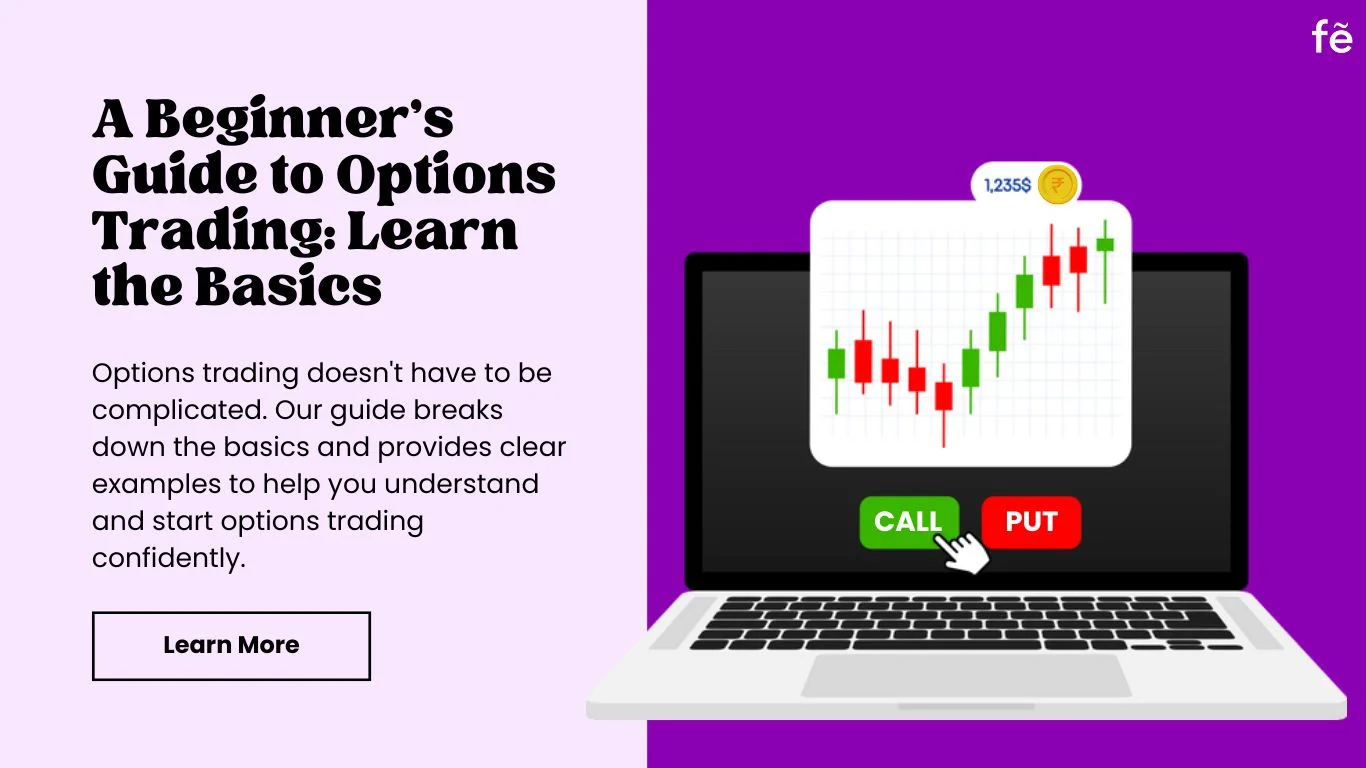
Ever since I started investing in the stock market, I've learned a lot about various things such as intraday trading, analyzing company financials, determining whether a stock is undervalued or overvalued, and so on.
But when I know about Future & Options trading. It completely blew my mind. It's a very complicated subject. I watched numerous videos to understand how it works, and read so many blogs, then I understood its concept.
So, in this blog, I will explain Option trading to you in the simplest way possible.
What Is Option Trading?
If we understand Options Trading from its so-called explanation then it is like this…
An option is a contract between the seller and the buyer. The seller gives the buyer the right to buy or sell a specific asset at a specified price in the future, but the buyer also has the freedom not to buy if he does not want to. Also, Investors buy and sell these options contracts in the derivatives market without directly owning the underlying stock.
FEELS BORING RIGHT? Let me explain it to you in my style with an example.
Options Trading is like making a advance booking where you have the freedom not to purchase it after booking.
Imagine you are planning to buy a new house priced at ₹30 lakh. You like the house, but you don't have enough money at the moment. You will get the money after 1 month by selling another property. So, you decide to buy the house then.
But then you get news, “Due to a government project being developed nearby, the price of the house will increase by ₹10 lakh in a month”. So, you make a contract with the builder by paying ₹10,000. This contract gives you the right to buy the house for ₹30 lakh even if the price increases by ₹10 lakh after a month.
But think, what if the opposite happens?
If the house price decreases by ₹5 lakh instead of increasing after a month, you would face a loss of ₹5 lakh.
However, you still have an option. You can cancel the contract by forfeiting the ₹10,000 you paid. This way, you avoid the ₹5 lakh loss. Now, you can buy the same house at the new lower price of ₹25 lakh.
This is how Options Trading works but in this example, you only get the option to buy. Whereas in stock market Options Trading, you can sell any stock by making a contract.
Note: After reading this, if you are finding Option Trading very profitable, easy and attractive, then let me tell you that out of every 10 only 3-4 people benefit from it. This is very risky and complicated. Therefore, invest money in it only after knowing all its advantages and disadvantages.
Things To Know Before Trade In Options?
Need High Capital:
If you don't have a lot of capital or can't afford to take significant losses, option trading is not for you. Unlike normal trading, where you can buy 5-6 stocks, option trading always involves buying and selling in "lots," such as a lot of 25 stocks. Therefore, the initial capital required is quite high.
Contract Premium:
As we saw in the house example, we had to pay 10,000 rupees to make the contract. Similarly, in option trading, the charges you pay to create a contract are called the premium.
A key aspect of this premium is that it changes with the timeframe. For instance, if the premium for a 1-month contract is 200 rupees, the premium for a 3-month contract for the same price will be higher, say 500 rupees.
Additionally, as the expiration date approaches, the value of the premium decreases, even if the stock price remains stable.
How Can You Trade In Options?
In intraday trading, you have two options: buy or sell. Similarly, in option trading, you have two choices: Call Option and Put Option.
Technically, we can't call them options because they are a type of contract: Call contract and Put contract. You can buy as well as sell both these contracts.
I think it's starting to sound quite complicated to you now. You might be wondering how to know when to buy or sell a call or put a contract. Let's make this easier for you. Follow the table below.
| Option | Buy When | Sell When |
| Call Option | Up Trend Expected | Stock Up Already |
| Put Option | Down Trend Expected | Stock Down Already |
If this still seems complicated, then forget you can also sell these call or put options. Just remember the house example, where you only have the option to buy a contract. Focus solely on your expectations for any stock.
Consider what your analysis suggests—whether you think the stock price will go up or down in a month. This table will help you understand it easily.
| Your Expectation | Buy |
| Price to Increase | Call Option |
| Price to Decrease | Put Option |
Now you should have a basic understanding of when to buy a call option and when to buy a put option. But Some of you might wonder which of these two options is more profitable and better. Let's explore the answer in the next section.
Which Is Better: Call Option or Put Option in the Stock Market?
First of all, remove the notion from your mind that either the Call Option or the Put Option is better. Because It depends on the situation, and calling one better than the other is incorrect.
It's like asking which side of a coin is better. The answer is obvious: both. Call Options and Put Options are like the two sides of a coin. Neither is inherently better than the other.
Choosing between a call option (CE) or a put option (PE) depends on several factors, including market conditions, outlook on the stocks of certain companies, risk tolerance, and investment goals.
So let's understand with some practical situations to see what actions you should take. This will help you make decisions more accurately. Discover when to buy the call or put option with real-life situations.
When to Buy Call Options vs. Put Options
When To Buy The Call Option?
In Bullish Market: This is the classic scenario. If you strongly believe that the price of a stock will go up in the future or you observe bullish sentiment in any particular stock, buying a call option can be a smart strategy.
Always Buy At Longer Expiration Period: Call options lose value over time, even if the stock price doesn't change. This loss of value over time is called theta decay. To give the stock price time to increase, it's best to buy call options with a longer expiration period, such as several weeks or months.
When the Stock Has Low Volatility: Options are generally more expensive (higher premium) when implied volatility is high. So it might be a good decision to buy call options in low volatility relative to historical levels, as this can offer potentially better value.
In Positive Earnings Reports: If a company is expected to announce positive earnings, its stock price might rise. Buying call options before such announcements can be profitable, but be aware of the increased premium due to expected volatility.
Follow Industry Trends: Look at trends in the industry that could affect the stock. For example, positive news in the tech industry could raise tech stock prices, so buying call options on those stocks can be profitable for you.
When To Buy The Put Option?
In Bearish Market: If you believe the market is going to decline, you can buy put options on an index fund that follows a major stock market index, like the SENSEX or NIFTY, to profit from the decline.
To Cover Losses On An Existing Holding: Let's say you own a stock you believe might go down, but you don't want to sell it just yet. So you can buy a put option on that stock as insurance. If the stock price drops, the put option will increase in value, helping to balance out your losses.
To Get the Benefit From Negative Event: If you expect a company to be negatively impacted by an event, such as poor earnings or regulatory issues, you can buy put options on that company's stock. If the stock price falls due to the event, the put option will become more valuable, allowing you to profit.
Conclusion
As I mentioned, I’ve tried to explain all the fundamentals of options trading in the simplest way possible. If there are still some aspects you don't understand, feel free to email me with your questions.
If you genuinely want to understand options trading, my request is not to trade based on guesses. Review the scenarios I’ve outlined, and if you can analyze technical charts, do that as well before making any decisions.
I want to remind you once again that option trading is very risky and complicated. Only proceed if you feel your "risk tolerance" is strong, because no matter how much you learn, you will incur loss.
I will cover the pros and cons of options trading in the next blog. Until then, happy investing!
You May Also Like:






